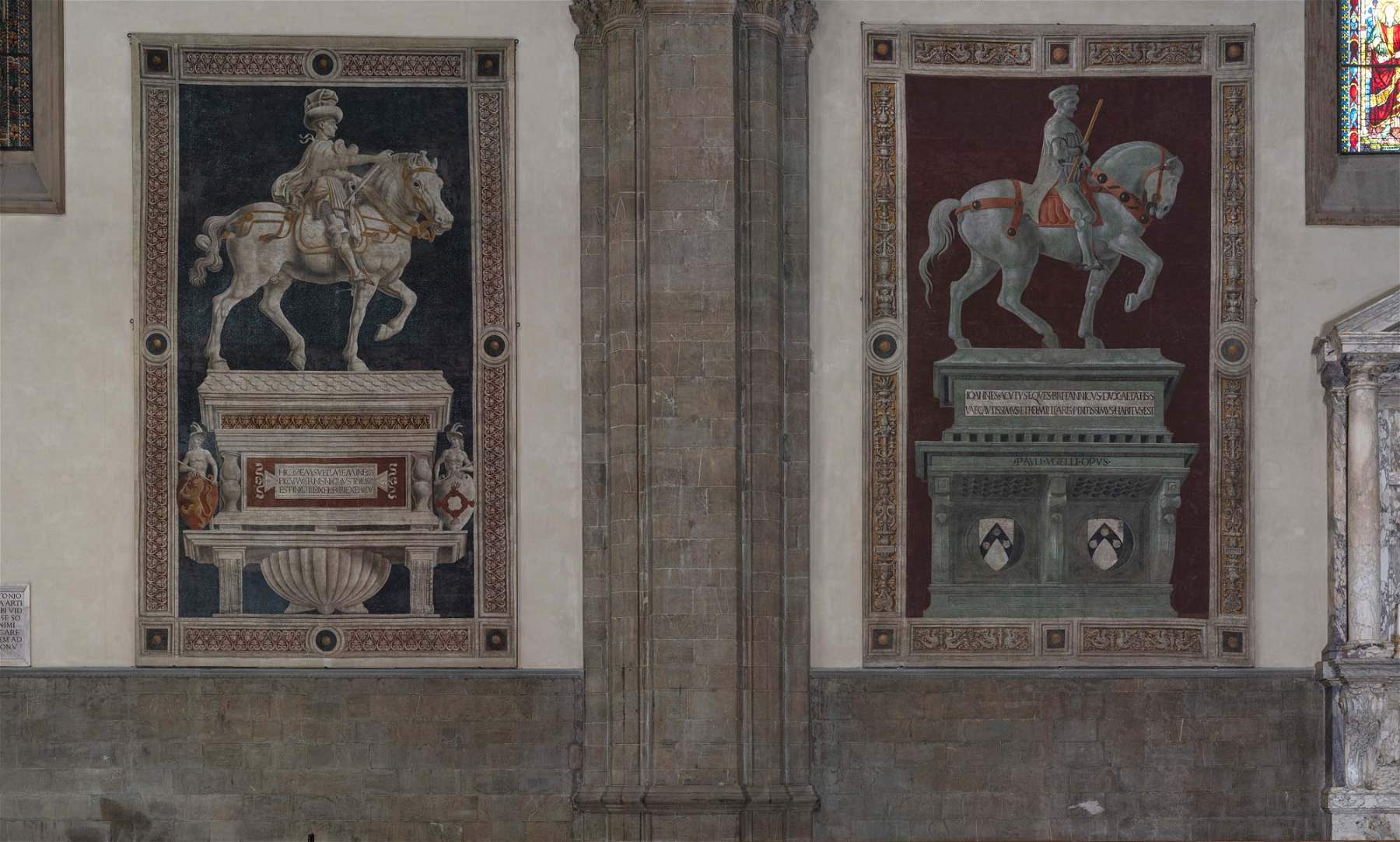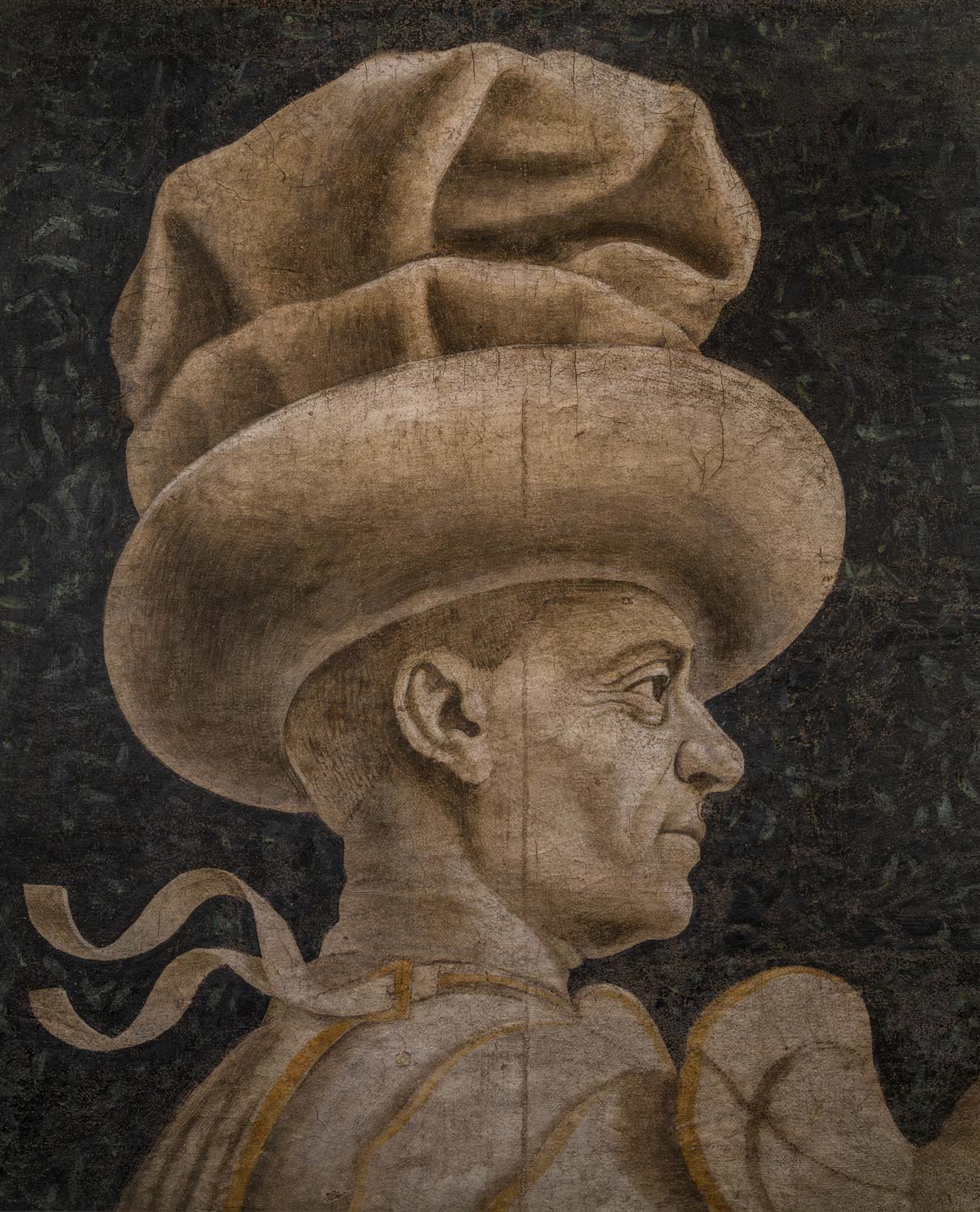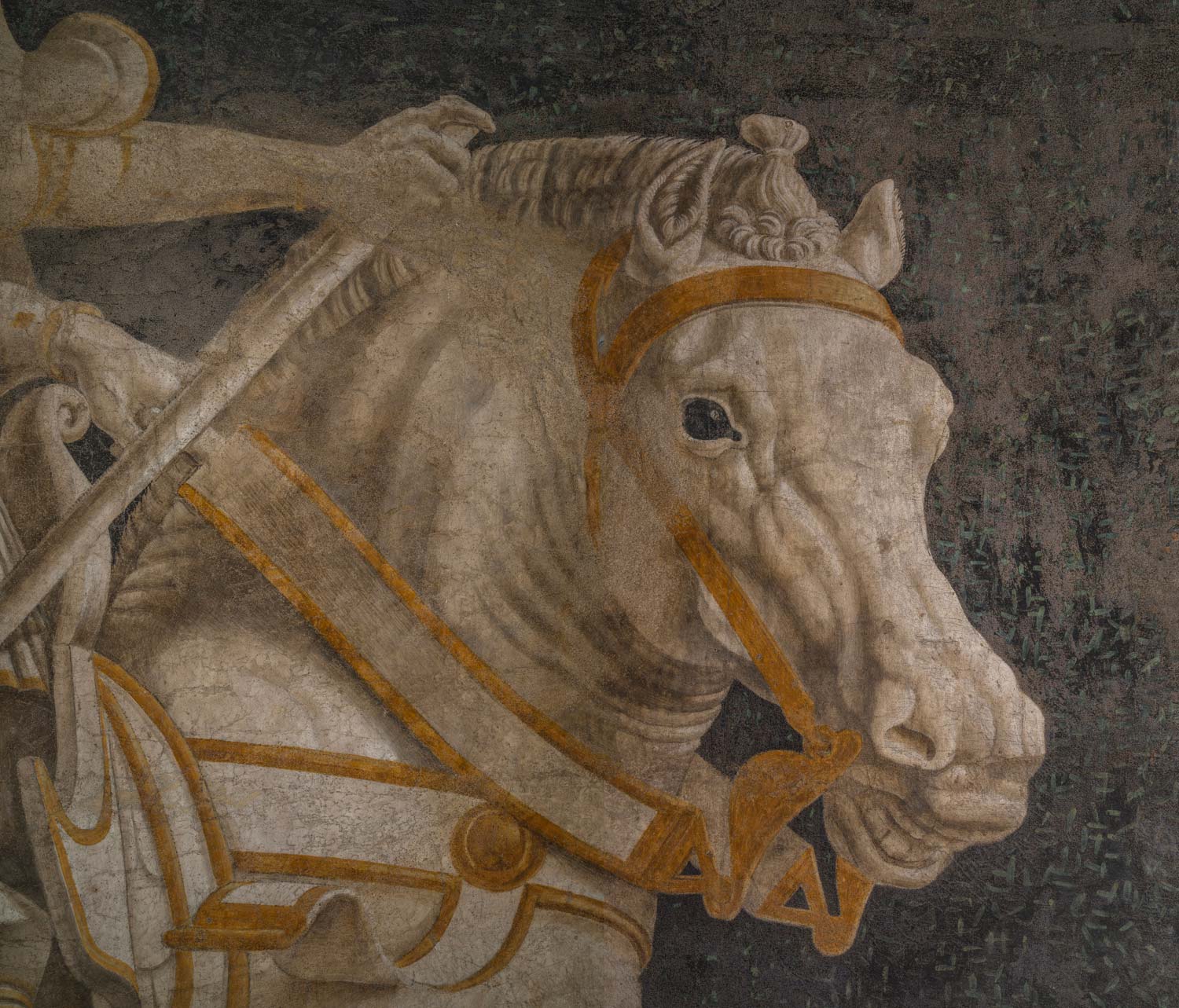In Florence , the restoration of the two famous frescoes by Paolo Uccello (Paolo di Dono; Pratovecchio, 1397 - Florence, 1475) and Andrea del Castagno (Andrea di Bartolo di Bargilla; Castagno, 1421 - Florence, 1457) depicting the legendary condottieri Giovanni Acuto and Niccolò da Tolentino (a detailed discussion of Giovanni Acuto can be found atthis link) and located in the left aisle of the Cathedral of Santa Maria del Fiore has been completed. Work had begun in May this year, and from Saturday, December 17, 2022, visitors to the cathedral will once again be able to see the two monumental frescoes freed from the scaffolding of the restoration site that has covered them for the past few months, or take part in specially organized guided tours. The restoration was commissioned and directed by theOpera di Santa Maria del Fiore, under the supervision of the Soprintendenza Archeologia, Belle Arti e Paesaggio for the metropolitan city of Florence and the provinces of Pistoia and Prato, and made possible thanks to the support of American Express. The work was entrusted to restorer Daniela Dini, who had already worked on the two works in 2000.
The two masterpieces have undergone numerous restorations over the centuries that have marked them indelibly. The Opera di Santa Maria del Fiore decided to intervene again because, although the state of conservation was quite good, more than twenty years had passed since the previous restoration and the pictorial surface appeared clouded by a uniform dark patina caused by the accumulation of particulate matter produced by pollution and inert dust deposited over time. The two painted cenotaphs are almost equal in size (the monument to Giovanni Acuto measures 855 by 527 centimeters and the one to Niccolò da Tolentino 833 by 512), but only Paolo Uccello’s is signed (it is, moreover, his first work to bear the signature).
Today’s restoration work that began in May 2022 was preventive and conservative in nature. In order to remove the most superficial dust, the restorers intervened with a dusting with soft brushes on all painting, while the deeper dust was removed with a light pad cleaning with absorbent cotton and deionized water and Japanese paper interposed, while trying to maintain as much as possible the previous major pictorial retouching. Finally, timely pictorial retouching, in tonal glazes, was carried out in the gaps through the use of natural pigments (vegetable and/or mineral).





The first restoration of the two frescoes dates as far back as 1524 and was carried out by one of the greatest artists of the time, Lorenzo di Credi, who at the same time also created the “candelabra” frame on Paolo Uccello’s fresco. In 1688 the two works were “reinvigorated” on the occasion of the wedding of Prince Ferdinando, son of Cosimo III dei Medici, to Violante of Bavaria. Given their poor state of preservation, in 1842 restorer Giovanni Rizzoli, in a very daring operation, detached them from the wall and placed them on a canvas canvas framed only at the sides. While the painter Antonio Marini intervened with a substantial pictorial restoration. Instead of putting them back in place, the two frescoes were placed in the counterfacade where they remained until 1946. Again in poor condition, in 1953, it was the turn of the major intervention conducted by Dino Dini who, in addition to removing the remakes of the previous restorations and doing a pictorial touch-up on the gaps, removed the two frescoes from the canvas, placing them on a rigid support consisting of tempered masonite and an aluminum frame. In the 2000 restoration, also carried out by Daniela Dini, the two works underwent complete cleaning and extensive pictorial retouching with tonal glazing in the gaps.
The brokerage of the partnership between the Opera di Santa Maria del Fiore and American Express, which supported the restoration, was handled by ArtFin Servizi e Consulenza per l’Arte.
The two frescoes depict two captains of fortune that the Republic of Florence wanted to pay homage to: John Acuto (John Hawkwood; Sible Hedingham, 1323 - Florence, 1394), with his private army, the “White Company,” consisting of two thousand Welsh archers equipped with enormous bows, almost two meters high, was in the service of various states and, after agreeing with the Florentine Republic to receive a life annuity from it against a guarantee not to attack it (the White Company was much feared), at the end of his career offered his services to Florence and died in the Tuscan city in 1394. Niccolò Mauruzi da Tolentino (Tolentino, c. 1350 - Borgo Val di Taro, 1435), after having fought for the Malatesta and passed into the service of the Florentines, was appointed captain general of Florence for his deeds. It was he who led, bringing victory, the terrible Battle of San Romano (1432), made immortal by Paolo Uccello in the famous triptych preserved in the Uffizi, the Louvre Museum and the National Gallery in London.
“The condottieri by Paolo Uccello and Andrea del Castagno,” says Sergio Givone, vice president of the Opera di Santa Maria del Fiore, “have a particular symbolic value for Florence. This gives the restoration a high value not only artistic, but also civil and cultural.”
“American Express enthusiastically supports the city of Florence with various initiatives aimed at enhancing its beauty and promoting its tourist attractiveness internationally,” says Maria Pina Carai, Director, Head of Client Management Global Merchant Services Italy at American Express. “With the contribution to the Opera di Santa Maria del Fiore we wish not only to promote the area, but also to return value to the community and stimulate, through our ecosystem, quality tourism that can attract tourists from all over the world. Our goal is to generate benefits as much for the Opera di Santa Maria del Fiore as for the entire city, supporting the discovery of small merchants, excellences and craft activities that represent the identity of Made in Italy abroad.”
 |
| Florence cathedral ends restoration of condottieri by Paolo Uccello and Andrea del Castagno |
Warning: the translation into English of the original Italian article was created using automatic tools. We undertake to review all articles, but we do not guarantee the total absence of inaccuracies in the translation due to the program. You can find the original by clicking on the ITA button. If you find any mistake,please contact us.